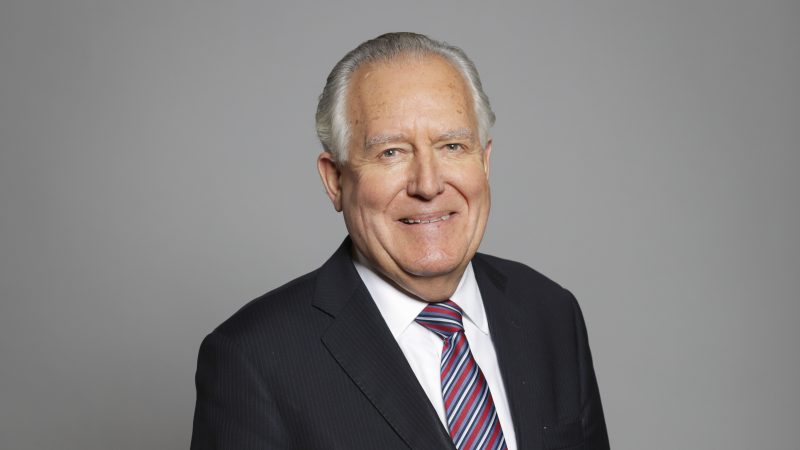
With Britain having the worst Covid-19 death rate in Europe and one of the highest in the world, hundreds of billions are being thrown at dealing with its consequences. This week, Boris Johnson is promising a big infrastructure investment – though his headline promises rarely match reality. Only recently, such a policy would have invited derision from Tory ministers about a ‘magic money tree’. But now the neoliberal orthodoxy on cutting public spending is in retreat, with even leading Conservatives questioning it. This opens up an opportunity for the Labour Party to seize and promote a modern Keynesian, public investment-driven, alternative – with growth, not austerity, at its heart.
Savage cuts in the UK public sector over the last ten Tory years left England short of 10,000 doctors, 40,000 nurses and 110,000 adult social care workers – fatally damaging the battle against the coronavirus, especially in care homes, which have suffered £7.7bn cuts. Year after year, the Tories claimed to have protected the health budget in real terms. But they never spent enough to keep up with an ageing population and the rising costs of new technology. The year 2020 began with more patients than ever before on waiting lists for treatment, A&E waiting times the worst on record and care homes going bankrupt as the demand for elderly care grew exponentially. It’s as if the Tories had chosen Ethelred the Unready as the patron saint of the health and care services.
No wonder Britain was so woefully ill-prepared and ill-equipped to combat Covid-19, with little of the necessary protective equipment, and the testing and tracing that Germany for instance immediately and so successfully implemented. Austerity, Tory ministers told us repeatedly before and after 2010, was unavoidable due to high levels of debt and borrowing triggered by the 2008 global banking crisis. And the former Tory Chancellor repeated that mantra last week on BBC Radio 4.
But after World War Two, with gargantuan levels of national debt and borrowing to defeat Hitler – much higher than after 2008 – Keynesian policies implemented by both Labour and Conservative governments rebuilt the country. The NHS and a welfare state were created; millions of new homes were built; and there was much faster economic growth than the abysmal rates in the Tory austerity decade since 2010. But since 2010 the government has been able to borrow at record-low interest rates. There was no need to wait until the coronavirus catastrophe before discarding the financial straitjacket, as the Chancellor finally did nearly three months ago.
After the crisis, there must be no reversion to knee-jerk style austerity and starving the public services of support in a futile attempt to balance the budget with febrile growth. This pandemic has reminded everyone what John Maynard Keynes taught us about the vital role for an active, investing state in a modern economy to support a flourishing private sector. The government is under pressure to get the economy back to normal and quickly, or risk lasting damage. But what we used to call ‘normal’ was not a good place to be. Business investment was at an abysmal level, retail sales were the worst for 25 years, and productivity was falling.
The only part of the economy that was flourishing was food banks: fewer than 100 in 2001, rising to over 2,000 now. Yes, UK employment had reached record heights before the pandemic, but this masked widespread insecurity with nearly a million people struggling to survive on zero-hour contracts and over a million in temporary work or doing second jobs. In total, nearly four million people – over 10% of the UK workforce – were in insecure work.
Ten years ago, the Tories used the overhang of increasing national debt and high government borrowing from the financial crisis as an excuse to squeeze £150bn of spending power out of the economy – 80% of it in public spending cuts, 20% in tax rises. But austerity was never, as we were constantly told, about balancing the budget and bringing down debt to be better prepared for a future crisis. It was a neoliberal, ideologically-driven agenda. A sustained strategy to reduce the role of the state.
George Osborne used to boast that he had squeezed the UK economy tighter than any in the advanced world, and that’s exactly what he did. He left Britain grossly unprepared for precisely the kind of health crisis that the government was warned about in 2016 by flu outbreak simulation exercise Exercise Cygnus but ignored.
This makes the Channel 4 News interview on May 19th, with one of the high apostles of Tory austerity, all the more remarkable. The party’s former leader Ian Duncan Smith urged that we “treat the [Covid-19] debt like wartime debt”. He now agrees that keeping the economy alive by borrowing heavily and spending record sums on support for business and families is the right response to a major crisis. Why, then, did he oppose doing so in 2010, when national debt was much lower than it is today?
After the Second World War, Britain grew her way out of debt. The national debt-to-GDP ratio fell from its wartime high of 259% to a post-war low of 26% in 1990. It was still only 36% before the financial crisis. Balancing the budget had nothing to do with bringing down Britain’s debt burden. In the past 50 years, Britain only had a budget surplus six times. Three of those were under the last Labour government. Margaret Thatcher only managed two. What brought the debt-to-GDP ratio down in the post-war period was economic growth, spurred by massive public investment. After the lockdown has been lifted, Labour should bury austerity and neoliberalism and set the agenda for Britain to fork off in an entirely new direction.




More from LabourList
‘Forget New Year – for Labour, discipline done well has to be their year-long resolution’
EXCLUSIVE: New Year Message from Anna Turley
Which Labour ministers did the most broadcast interviews in 2025?